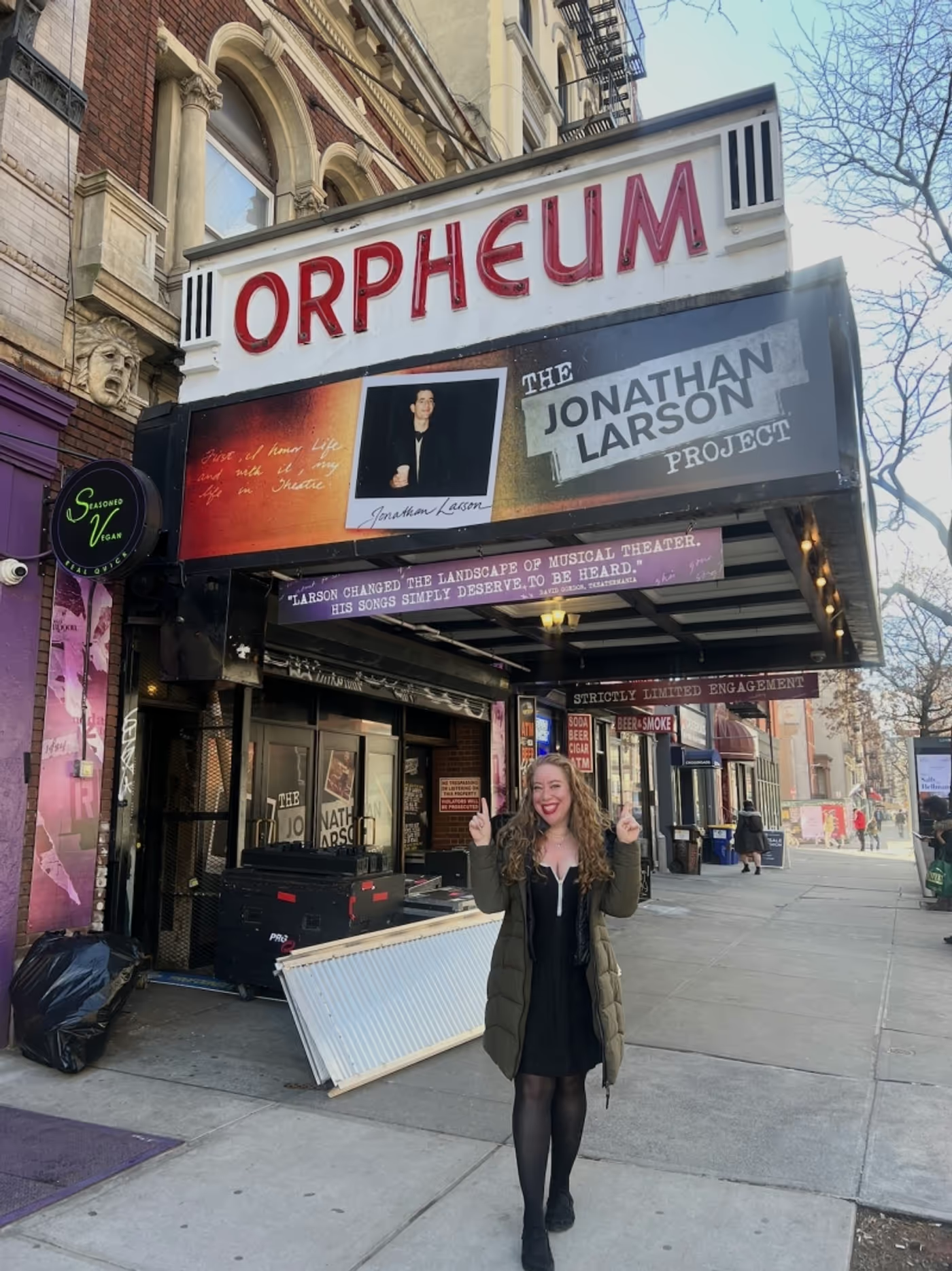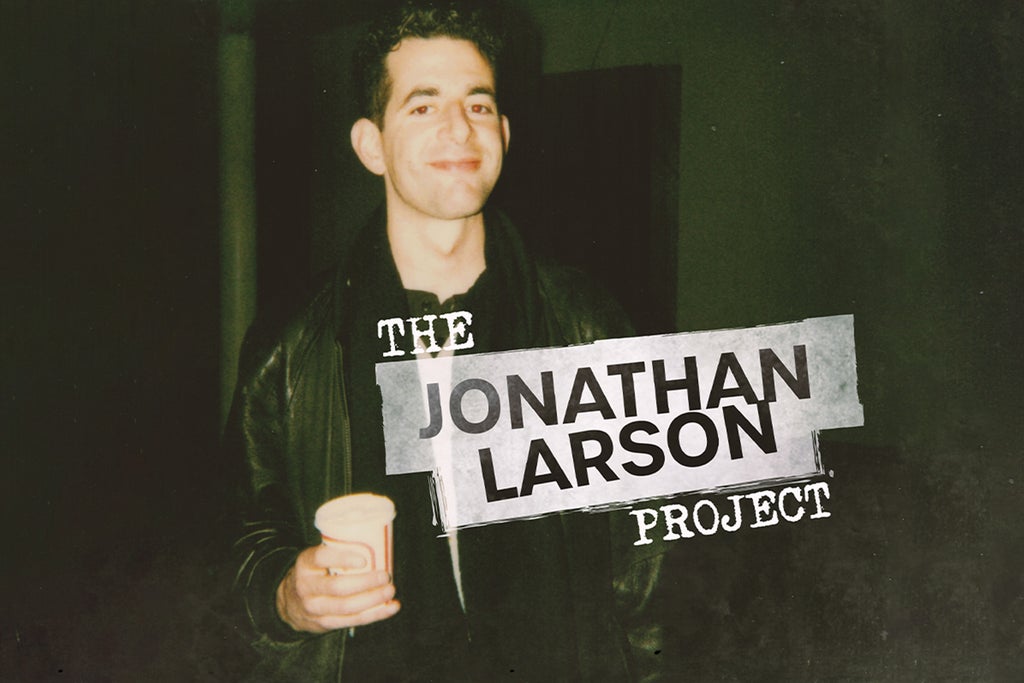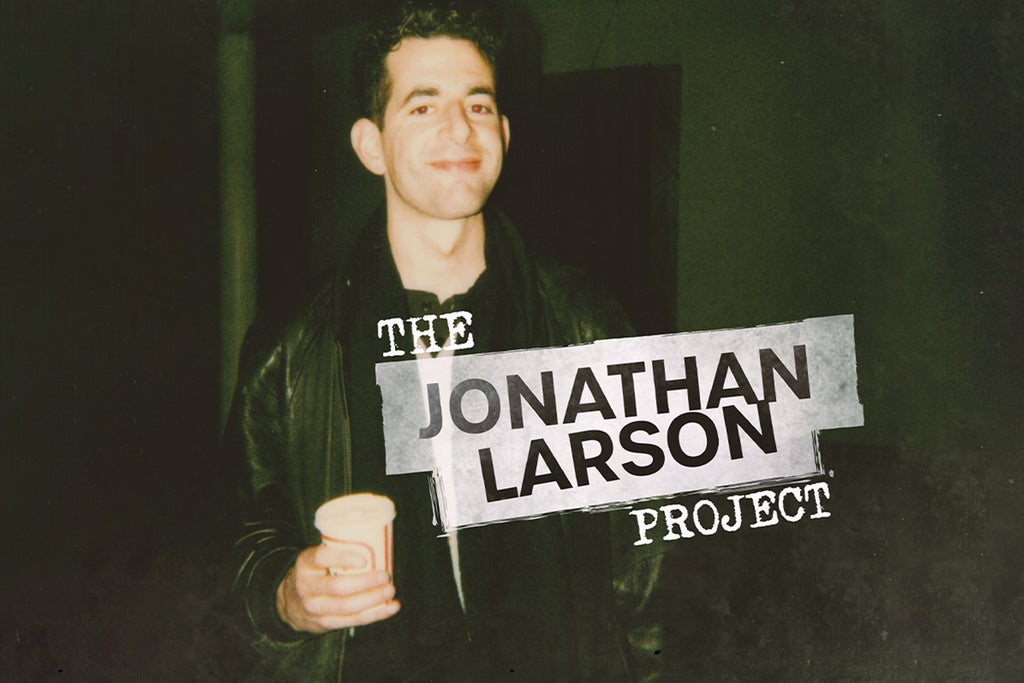An In-Depth History of the Orpheum Theatre
The Orpheum Theatre is currently home to The Jonathan Larson Project.
Do you have a burning Broadway question? Dying to know more about an obscure Broadway fact? Broadway historian and self-proclaimed theatre nerd Jennifer Ashley Tepper is here to help with her new series, Broadway Deep Dive. Every month, BroadwayWorld will be accepting questions from theatre fans like you. If you're lucky, your question might be selected as the topic of her next column!
Submit your Broadway question in the comments here!
This time, the reader question was: What are the untold stories of the Orpheum Theatre?
We are about to start previews at the historic Orpheum Theatre off-Broadway with The Jonathan Larson Project, the new musical that I conceived!
I have been fascinated to learn more about the history of the Orpheum, located at 126 Second Avenue, between St. Marks Place and East 7th Street.
Some of the shows that the Orpheum has been best known for are Stomp, which ran there for an astounding 29 years, from 1994 to 2023, and the original production of Little Shop of Horrors which spent over five years at the theater from 1982 to 1987.
We are particularly thrilled for The Jonathan Larson Project to be housed in a theater with such history, that was around during Larson’s time. He walked the same streets in the East Village while working on RENT at New York Theatre Workshop, as we do today on our way to the Orpheum, 4 blocks away.

The Orpheum has a thrilling and fascinating undiscovered history.
In 1860, Elizabeth Blackwell established the Women’s Medical College of the New York Infirmary in the building that is now the Orpheum Theatre. At the time, it was the only institution in the city that would train women to be doctors.
126 Second Avenue was both a residence and also had a first floor that functioned as a public space. In 1900, it was the quarters of the Austro-Hungarian Republican League.
In 1904, the Orpheum became a performance venue for the first time. The New York Times headline declared “New ‘Bohemia’ Discovered on East Side”! Ligety’s Orpheum was the spot’s official name, for founder Aaron Ligety. Ligety sought to create the same atmosphere on Second Avenue that could be found in Vienna, where “orpheum” was the name for institutions with entertainment, dining, drinking, and socializing. These places were also called “tinkle tankle”s, so New Yorkers in-the-know nicknamed Ligety’s Orpheum “the tinkle tankle” for that reason.
At the beginning, Ligety’s Orpheum was largely populated by immigrants from Germany, the Czech Republic, Hungary, Austria, and otherwise. They filled the large first floor of what had previously been the infirmary and private residential building. Gradually, New Yorkers born in America heard about Ligety’s Orpheum and made their way to 126 Second Avenue to partake in the merriment, including a Hungarian orchestra, a Viennese troupe of actors, artists drawing live sketches, and a menu of spiced European specialties.
In 1907, the space known as Ligety’s Orpheum was sold at auction to its next owner. The sale included the venue’s 600 chairs, 150 tables, 250 dozen napkins, 50 dozen table cloths, 1,000 glasses, and more. The space was claimed by the Orpheum Garden Company, an entertainment palace which had previously been located in the Bowery—an entirely different “orpheum” than Ligety’s, but an orpheum all the same. According to archival research, they purchased the space but never moved in.
By 1914, the Orpheum Theatre, called as such, was a movie house. Located in the heart of the Yiddish Theatre District, also called the Yiddish Rialto, on Second Avenue, the Orpheum was never a Yiddish live entertainment house, although there were Yiddish theatre companies who held offices on the Orpheum’s third floor at times. For over 40 years, the Orpheum showed films.
Live, legit theatre premiered at the Orpheum in 1958 when the American Mime Theatre came to town. Theatergoers attended a performance at the Orpheum today can see a poster from that engagement in the lobby! Shortly after, a new musical revue called Chic opened at the Orpheum, with actors including Bea Arthur, Bob Dishy, Eileen Rodgers, and Virginia de Luce.
The Orpheum saw its first long run when the new musical spoofing operettas and old fashioned musical comedies, Little Mary Sunshine, opened in 1959. The show, with book, music, and lyrics by Rick Besoyan made a star of Eileen Brennan and delighted audiences off-Broadway for 1,143 performances. A year and a half of those performances were at the Orpheum before Little Mary Sunshine moved to other theaters in the Village. Little Mary Sunshine was part of a new era off-Broadway where nostalgic small scale musicals achieved long runs, also characterized by The Threepenny Opera and Leave It To Jane revivals.
The next three productions at the Orpheum ran for a total of 22 performances. The Thracian Horses (1961) by Maurice Valency adapted an ancient Greek legend. Madame Aphrodite (1961) is the only Jerry Herman musical to not receive a cast recording nor ever be produced after its original Orpheum production. The lost Herman show has a book by Tad Mosel, who also wrote the television play that Madame Aphrodite is based on. The show, about a woman who creates and sells a phony beauty product, was Herman’s first book musical. Half-Past Wednesday (1962) was an adaptation of Rumpelstiltskin with book by Anna Marie Barlow, music by Robert Colby, and lyrics by Colby and Nita Jonas.
Anything Goes made a splash at the Orpheum in 1962. This revisal of the classic 1934 Cole Porter musical interpolated several songs from other Porter scores as well as plot adjustments made in the 1936 film adaptation. Eileen Rodgers played Reno Sweeney in this first New York revival of Anything Goes, which received a cast recording, won the Outer Critics Circle Award for Best Revival, and influenced the licensed version of the property. The Orpheum’s Anything Goes marked the first time that “Friendship”, “It’s De-Lovely”, “Let’s Misbehave” and “Take Me Back to Manhattan” were performed in the stage musical.
Two one-act two handers by Murray Schisgal (Luv) moved into the Orpheum next and ran for 200 performances. Spouses and frequent collaborators Anne Jackson and Eli Wallach starred in The Typists and the Tiger (1963). Marian Seldes won a 1964 Obie Award for the Orpheum’s next production, a musical adaptation of J. P. Donleavy’s classic, best-selling, and controversial novel The Ginger Man. A musical adaptation of Little Women by Louisa May Alcott called Jo landed at the theater in 1964 with Susan Browning (Company’s original April) as Meg and Karin Wolfe (the title role in the original Broadway production of Gigi) as Jo.
Little Mary Sunshine’s Rick Besoyan returned to the Orpheum with Babes in the Wood (1964), his musical adaptation of A Midsummer Night’s Dream. Academy Award nominee Sylvia Miles starred in the new play Matty and the Moron and the Madonna in 1965, directed by Tony Award winner José Quintero. Ray Bradbury, beloved writer of work including the novel Fahrenheit 451, wrote a stage piece called The World of Ray Bradbury, which played five performances at the Orpheum in 1965. It consisted of three one act plays addressing human conflicts with machines.
Six shows played the Orpheum in 1967. A 26-year-old Martin Sheen appeared in The Wicked Cooks, followed by a revisal of the 16th century Shoemaker’s Holiday, followed by a stage adaptation of Nikolai Gogol’s The Diary of a Madman. The Orpheum’s next three shows featured video by Robert Downey (father of Robert Downey Jr.), performances by Morgan Freeman, Viveca Lindfors, and Stacy Keach, and a tribute to the art of Irish story-telling.
The next three productions at the Orpheum were all musicals, and all important and fascinating for their own reasons. In January of 1968, a new rock musical called Your Own Thing premiered at the Orpheum. It would go on to play almost 1,000 performances off-Broadway. Had the show transferred to Broadway—which was planned at one point but didn’t happen—it might have changed the landscape of musical theatre, and been credited as Broadway’s first rock musical. Instead, Hair, which started off-Broadway in 1967 and then moved to Broadway in April 1968, was first in both avenues and gained the title of Broadway’s first rock musical.
But Your Own Thing was a new style of musical that shook things up downtown at the same time as Hair was shaking things up uptown. The youthful, pop-rock adaptation of Twelfth Night was psychedelically-influenced and very of its time. In the New York Times, Walter Kerr noted that what Broadway really needed in order to keep moving forward was musicals just like Your Own Thing taking over.
After two plus years of Your Own Thing, the Orpheum welcomed another youthful musical embracing contemporary musical genres. The Me Nobody Knows dramatized the lives of children and teenagers living on the streets. This show did move to Broadway after about 200 performances on Second Avenue. An 11-year-old Irene Cara was in the cast, a decade before Fame.
Next in the house was another musical related to Hair: Rainbow, which had music and lyrics by Hair co-writer Jim Rado, and book by Rado along with his brother Ted Rado. Meat Loaf was among the actors in this new musical, which Clive Barnes in the New York Times hailed as the first strong follow-up rock musical to Hair that would become a success. It did not, running only 48 performances, as most others found the show too confusing. The plot, unconventionally realized, followed Man, who had just been killed in the Vietnam War and was now traveling over the Rainbow.
From 1973 to 1979, the Orpheum was abandoned, with no performance tenants other than some occasional short-term rentals. This was emblematic of theatre real estate on and off-Broadway throughout the mid-1970s to mid-1990s, a time when Jonathan Larson himself bemoaned all of the empty theaters that were without productions, when he was yearning to see his work performed on a New York stage.
Then in 1979, four new productions came to the Orpheum in one calendar year. My Old Friends was a new musical about a geriatric community that transferred to Broadway. Next came a short-lived play called People in Show Business Make Long Goodbyes which was produced by actor John Cullum. Big Bad Burlesque was a show that critics agreed was just that. It was followed by the premiere of Fugue in a Nursery, the second show in Harvey Fierstein’s Torch Song Trilogy.
Like 1979, 1980 saw four productions at the Orpheum in quick succession. Song Night in the City was an eclectic revue, and was followed by a revival of T.S. Eliot’s The Cocktail Party. A Sleepless Night with an Honest Man was billed as “a new comedy about Benedict Arnold” and Richie was a new play about divorce told from a teenager’s point of view.
After four productions in 1979 and four in 1980, the Orpheum presented two shows in 1981: An Evening with Joan Crawford and Key Exchange. Then, after 10 shows in three years, the next production ran for over five years! That was Little Shop of Horrors, the game-changing musical by Howard Ashman and Alan Menken that epitomized off-Broadway in the 1980s and enthralled audiences. The plants took over the Orpheum from 1982 to 1987 as Seymour and Audrey attracted the biggest celebs downtown and an entire generation was inspired by the show. Little Shop of Horrors was subversive, original, and integrated theatre and popular music with tunes like “Suddenly Seymour”, “Somewhere That’s Green”, and the title number.
The 1980s at the Orpheum closed out with Davy Jones’ Locker (1987), a puppet production with music by Mary Rodgers, Sandra Bernhard’s solo show, Without You I’m Nothing (1988), the short-lived play The Faithful Brethren of Pitt Street (1988), and finally Charles Busch’s beloved satire of 1940s melodrama, The Lady in Question (1989).
Six productions opened at the Orpheum before Stomp moved in in 1994 and stayed for three decades. Sex, Drugs, and Rock & Roll (1990) won playwright and monologuist Eric Bogosian an Obie and was adapted into a film of the same name. Quiet on the Set (1990) was a play about daytime soap operas, that starred actual soap stars. Mambo Mouth, a tour-de-force for playwright and actor John Leguizamo transferred from American Place Theatre in 1991, and won Leguizamo an Obie and an Outer Critics Choice Award. The show was the first of six writer-performer pieces created by Leguizamo. Sam Rockwell made his off-Broadway debut in 1991’s Unidentified Human Remains and the True Nature of Love, which also starred Clark Gregg. In 1992, Donald Margulies’ Sight Unseen moved to the Orpheum for an extended run after premiering at Manhattan Theatre Club’s Stage II. Laura Linney starred in the play that won an Obie Award and was a Pulitzer Prize finalist. Next, David Mamet’s controversial two-hander Oleanna moved into the Orpheum for over 500 performances.
And then came Stomp! The mega-hit phenomenon opened on February 27th, 1994 and didn’t close until 29 years later, on January 8th, 2023. Stomp! originated in England and enthralled audiences with its inventive concept. Performers use everyday objects to create a percussive symphony. For close to three decades, audiences at the Orpheum experienced this collision of dance, music, and performance that remains unlike anything else before or since.
Two productions played the Orpheum between Stomp!’s triumphant run and The Jonathan Larson Project making the theater our home. These were Rachel Bloom’s Death Let Me Do My Show (2023) and The Big Gay Jamboree (2024). Bloom’s hit one-woman musical comedy explored the recent COVID-19 pandemic and the unexpected humor and pathos of death in general, and was filmed as a television special. The Big Gay Jamboree was a follow-up of sorts to the success of off-Broadway musical hit Titanique, a fast-paced, zany, hilarious, and yes, very gay musical from co-creator and star Marla Mindelle.
And now, The Jonathan Larson Project is taking over the Orpheum, with so much love and respect for the wide-ranging, fascinating, and utterly New York history that came before us at our theater. We are proud to be a part of the Orpheum legacy and hope we will do all those who came before proud. Come see us at the historic Orpheum starting February 14th!



